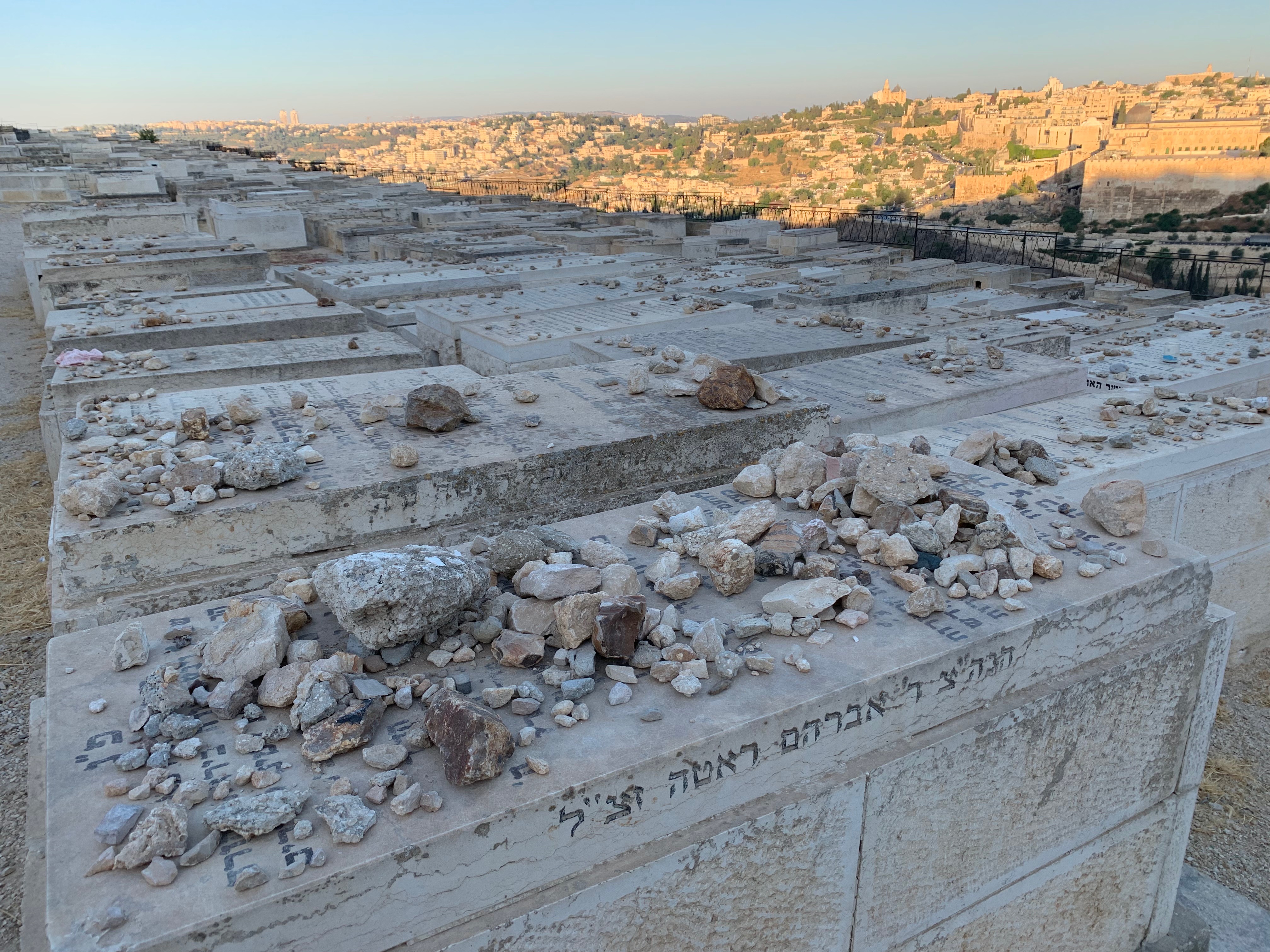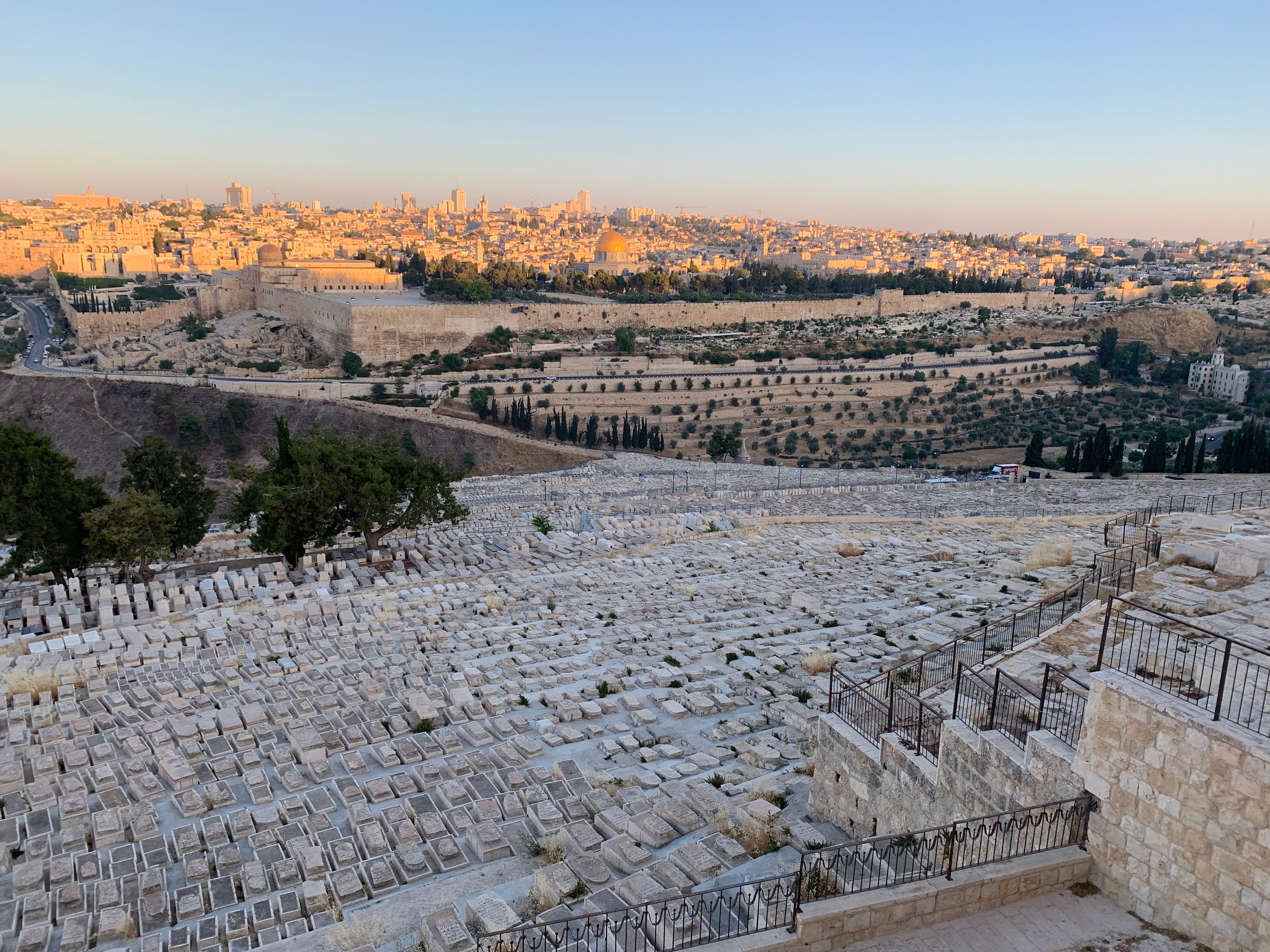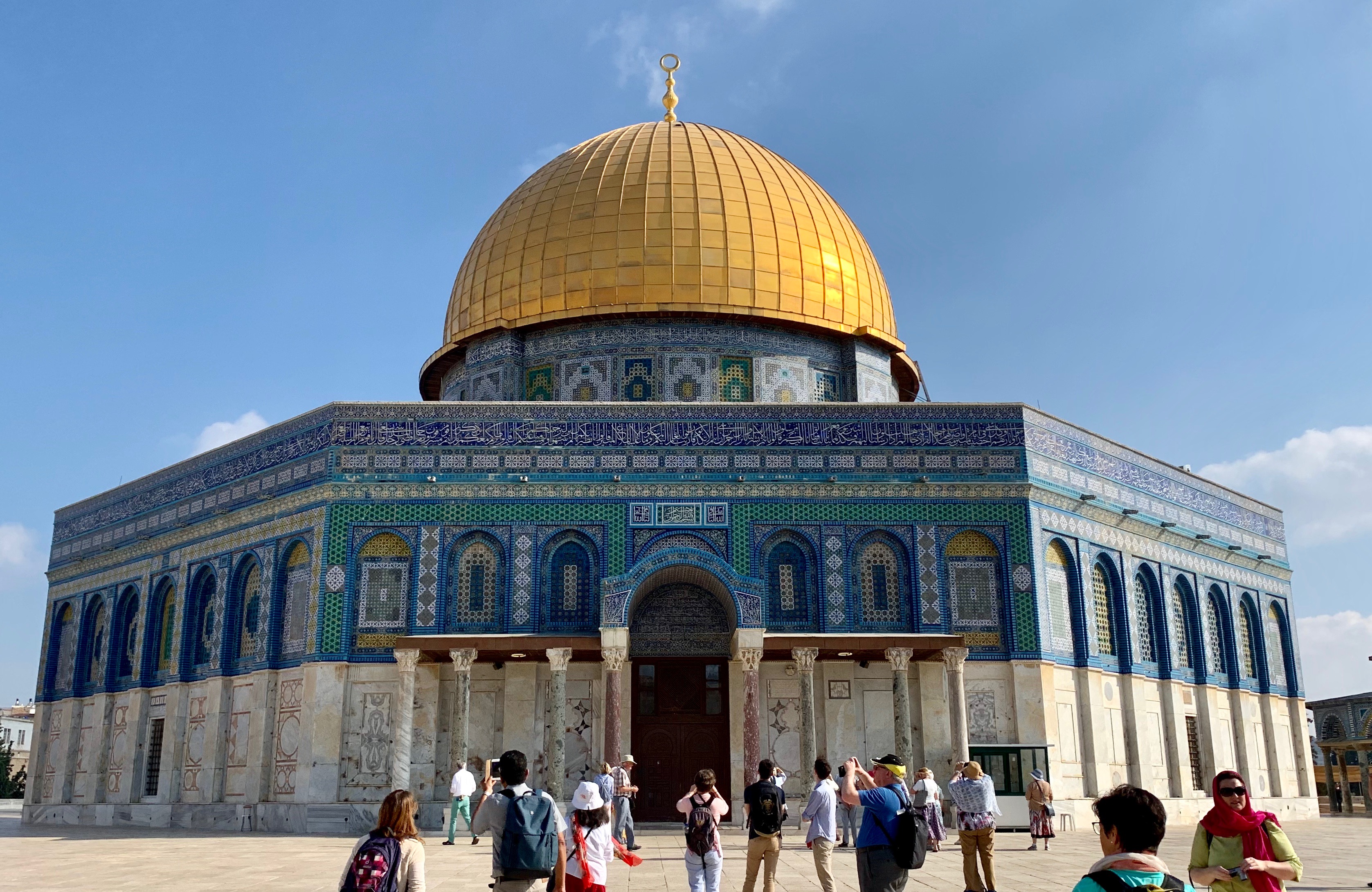The ten-hour time shift created the perfect storm for our jet lag: we found ourselves fighting sleep in the early afternoon and then wide awake somewhere between midnight and 2 am, ready to attack the day.
On the bright side, this made getting a start before the heat of the day set in easy. So Sunday morning, we hopped on a bus at just after 5 am, squeezed in amongst the Haredi Jews coming from the ultra-orthodox Mea She’arim neighborhood (Michelle had a lovely conversation with an old woman from Queens, who encouraged Zev to dedicate himself to the Torah, as that was all he needed for a happy life) and made our way to the Mt of Olives before dawn.
4 On that day his feet will stand on the Mount of Olives, east of Jerusalem, and the Mount of Olives will be split in two from east to west, forming a great valley, with half of the mountain moving north and half moving south.
Zechariah 14:4
According to legend, when the Messiah comes, it is here that the resurrection of the dead will begin, so it has long been a place people want to be buried. First in line!
It’s also a great place to watch the sun rise on the old city, as it happens.
The rest of our days in Jerusalem were mostly spent wandering the old city of Jerusalem, or in the area just to the west, up and down Rahov Jaffa. Our search for gluten-free (potato-free, soy-free, egg-free, dairy-free) food was difficult, but we managed. The Mahane Yehuda Market, just a couple blocks from our flat, had all the fresh fruits, vegetables, meat, and lox we needed, and there was a taco joint not far, as well. (I subsisted almost entirely on falafel, never twice from the same spot.)
My Hebrew improved day-by-day. I couldn’t quite carry on a conversation, but I could at least order us a couple cups of coffee, read directions and generally help us navigate the city.
Our trip to the Israel Museum was worth the long walk (for me, at least, Zevin was jet lagged and we ended up leaving after only a short while). We did, however, see what was described as the oldest piece of art in the world, this fertility goddess dating back over 250,000 years, found in the area.
They also did a nice job of walking you through the various stage of human occupation in the area, dating back through the paleolithic, neolithic and then through the various tribes that lived in the area. I’ve never seen such a collection of well-preserved artifacts. It gave me a clearer sense of the sophistication and culture of the many peoples that have occupied the Levant.
Unfortunately, the travel and jet lag ended up catching up with Zevin, and the last couple of days found him incapacitated by fever in flat. Michelle and I left him (gasp!) for a morning walk through the old city, visiting the Western Wall as well as the Temple Mount (gasp!), but otherwise took his cue and relaxed with some downtime out of the heat.

He was almost recovered by the time we left for our next destination: Ein Gedi, Masada and the Dead Sea.




































































